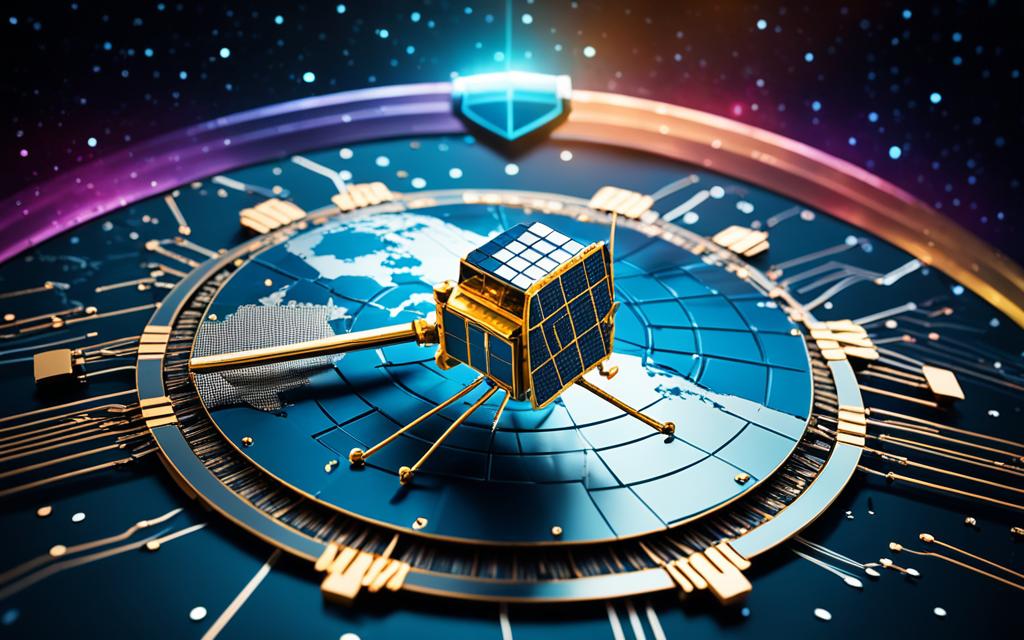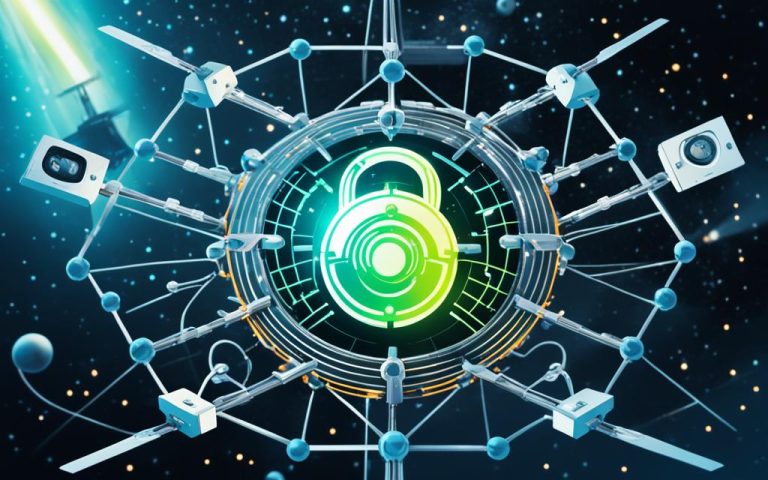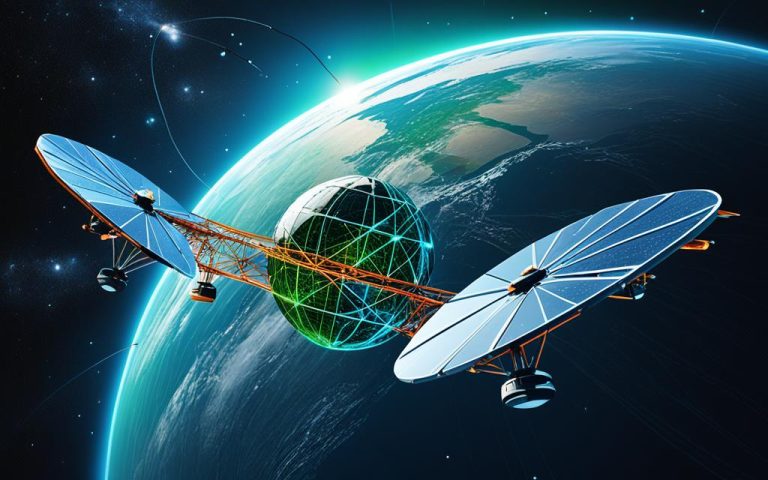Satellites have become crucial in our modern world for communication, navigation, and commerce. However, they are increasingly vulnerable to cyberattacks. Recent events, such as the 2022 attack on the Viasat KA-SAT network and the intrusion into SpaceX’s Starlink terminals, highlight the growing threat to satellite infrastructure. The number of cyberattacks on satellites has increased by 300 percent in the past five years.
It is essential to develop robust encryption and secure communication protocols to protect sensitive data and prevent unauthorized access to critical satellite systems. Upgrading satellite cybersecurity may have costs, but they are far outweighed by the potential losses from a major cyberattack.
Satellite cybersecurity protocols involve implementing advanced cybersecurity measures and technologies specifically designed to enhance the security of satellite networks. These protocols include robust encryption algorithms, secure data transmission protocols, and intrusion detection systems. By incorporating advanced cybersecurity protocols, satellite operators can mitigate the risks posed by cyberthreats and safeguard the integrity and availability of satellite-based services.
As cyberadversaries continue to evolve their techniques, satellite network security must keep pace. Advanced cybersecurity protocols provide the necessary defenses to protect satellite infrastructure against emerging threats and ensure the uninterrupted operation of critical services.
The Growing Vulnerability of Satellite Systems
Satellites have evolved into sophisticated, multipurpose platforms with a critical role in global connectivity and security. They are pivotal in daily conveniences like GPS and Internet access, as well as in international defense systems and global environmental monitoring. This makes them prime targets for cyberattacks. Recent cyber incidents, such as the attack on the Viasat KA-SAT network and the intrusion into SpaceX’s Starlink terminals, demonstrate the growing vulnerability of satellite infrastructure. These incidents mark an escalating trend as cyberactors recognize the potential for devastating disruption through satellite-based attacks. The number of attacks on satellite-based communication systems has increased by 300 percent in the past five years.
The Urgent Need for Fortified Satellite Cybersecurity
The 2022 Viasat KA-SAT attack, attributed to Russian state actors, resulted in widespread Internet outages and disruptions in remote sensing services across Europe. Thousands of subscribers were affected, and a major German energy company lost remote access to thousands of wind turbines. This alarming incident has prompted an international call for urgent cybersecurity measures to strengthen space technology.
The intrusion into SpaceX’s Starlink terminals further exposed the vulnerability of satellite systems to sophisticated cyberattacks. These events underscore the critical need for enhanced satellite cybersecurity to prevent potentially devastating consequences. Cybersecurity experts emphasize the importance of developing robust encryption and secure communication protocols specifically tailored for satellites.
Safeguarding satellite infrastructure requires immediate action to enhance cyber-resilience and protect critical space assets. The implementation of urgent cybersecurity measures is essential to ensure uninterrupted operation of satellite-based services and secure the interconnected world we depend on.
The Impact of the 2022 Viasat KA-SAT Attack
The 2022 Viasat KA-SAT attack had far-reaching consequences, emphasizing the urgency of fortified satellite cybersecurity. The attack caused widescale Internet outages, affecting individuals, businesses, and essential services across Europe. Notably, a major German energy company experienced the loss of remote access to thousands of wind turbines, leading to potential disruptions in energy production.
“The 2022 Viasat KA-SAT attack was a wake-up call for the satellite industry and governments worldwide. It demonstrated the immense power and consequences of cyberattacks on satellite infrastructure,” said Bill Turner, a cybersecurity analyst at Global Defense Systems.
These alarming events have elevated the international concern for satellite cybersecurity and the need for proactive measures to mitigate future threats. Governments, industry leaders, and cybersecurity professionals are collaborating to develop urgent cybersecurity strategies and fortify satellite systems against potential cyberattacks.

Overcoming Challenges in Satellite Cybersecurity
Retrofitting satellites with advanced security technologies and implementing cost-effective solutions is a critical step in enhancing satellite cybersecurity. However, this process can be financially demanding, especially when retrofitting older satellites or designing advanced systems for new ones. Despite the challenges, advancements in cybersecurity technology have made these solutions more affordable and easier to integrate.
The U.S. National Institute of Standards and Technology (NIST) has identified quantum-resistant cryptographic algorithms as a cost-effective way to secure satellite communications. By implementing these algorithms, satellite operators can mitigate the risk of cyberattacks and ensure the integrity of their data transmissions. Additionally, post-quantum cryptography has been successfully demonstrated in multiorbit data communications, further enhancing the security of satellite transmissions.
Collaborations between academia and industry have showcased the feasibility and value of investing in satellite cybersecurity. These partnerships have resulted in the development of advanced security technologies and innovative approaches to safeguarding satellite infrastructure. By leveraging the expertise of both sectors, cost-effective solutions can be created that address the complexities of satellite cybersecurity, countering arguments about cost and complexity.
“Retrofitting older satellites with advanced security measures and designing secure systems for new satellites is a challenging task. However, advancements in cybersecurity technology offer more affordable and easier-to-integrate solutions. Collaborations between academia and industry demonstrate the feasibility and value of investing in satellite cybersecurity, countering arguments about cost and complexity.”
By overcoming the challenges associated with satellite cybersecurity, organizations can protect their space assets and ensure the uninterrupted operation of satellite-based services. These efforts contribute to the overall cybersecurity resilience of the satellite network, safeguarding critical infrastructure and maintaining the integrity of satellite communications.
Benefits of Retrofitting Satellites with Advanced Security Technologies
| Benefits | Explanation |
|---|---|
| Enhanced Data Security | Retrofitting satellites with advanced security technologies strengthens data encryption and authentication mechanisms, reducing the risk of unauthorized access and data breaches. |
| Improved Resilience | By integrating robust security measures, satellites become more resilient to cyberattacks and other threats, ensuring continuous operation and reliable performance. |
| Mitigated Financial Losses | Investing in satellite cybersecurity lowers the risk of financial losses resulting from cyberattacks, which can cause disruptions, reputational damage, and financial liabilities. |
| Long-Term Cost Savings | Although retrofitting satellites with advanced security technologies may require upfront investment, it can lead to long-term cost savings by mitigating the impact of potential cyberattacks and reducing the need for frequent system repairs or replacements. |
The Role of International Collaboration in Satellite Cybersecurity
Securing satellites against cyberthreats requires international collaboration and the implementation of regulations and standards. By bringing together expertise from around the world, we can develop robust security measures to protect satellite infrastructure.
The European Parliament has taken the lead in advocating for stronger cybersecurity measures in space technology. Recognizing the need for enhanced cyber-resilience, they have called for the establishment of international regulations and standards to safeguard satellite networks.
Initiatives such as the collaboration between the University of Alabama and Lockheed Martin showcase the value of proactive investment in satellite cybersecurity. By combining academic research with industry experience, this partnership drives innovation and advances the development of advanced security technologies.
Research and development play a crucial role in fortifying satellite infrastructure. Through international collaboration, countries can share knowledge and resources to address emerging cyber threats. By pooling our expertise, we can stay ahead of cyber adversaries and ensure the continuity of satellite-based services.
International Collaboration and Partnerships
To effectively protect space assets and defend against cyberattacks, international collaboration among countries and partnerships with private-sector leaders in space technology are vital. By working together, we can connect the brightest minds and leverage collective experience to tackle cybersecurity challenges.
International collaboration enables the identification and dissemination of best practices in satellite cybersecurity. By learning from each other’s experiences, we can develop comprehensive approaches that encompass the diverse threats faced by satellite networks.
Academic institutions, industry leaders, and government agencies can collaborate to establish research and development centers dedicated to satellite cybersecurity. These centers serve as hubs for innovation, fostering the development of cutting-edge technologies and solutions.
| Benefits of International Collaboration in Satellite Cybersecurity |
|---|
| Knowledge sharing and exchange of best practices |
| Accelerated research and development of advanced security technologies |
| Improved threat intelligence and identification of emerging risks |
| Enhanced cooperation in incident response and recovery efforts |
| Establishment of global regulations and standards for satellite cybersecurity |
International collaboration in satellite cybersecurity is not a luxury but a necessity. The interconnected nature of satellite networks requires a united front in safeguarding space assets and ensuring uninterrupted operation of critical services.
By embracing collaboration, research and development, and the establishment of international regulations and standards, we can fortify satellite infrastructure and protect the vital services it enables.
The Evolving Landscape of Cybersecurity Attacks on Satellites
The expansion of the space industry and the growing reliance on satellite technology have exposed the space environment to a range of cybersecurity threats. Attacks on satellites have become more prevalent over the past decade, with malicious actors targeting various sectors like telecommunications, navigation, weather forecasting, and national security.
Vulnerabilities in satellite systems can be exploited through methods such as denial of service, hardware backdoors, malware, privilege escalation, hijacking, and sensor manipulation. These escalating risks pose significant challenges to the security and integrity of satellite infrastructure.
However, the space industry is actively working on implementing countermeasures to tackle these threats. Efforts are being made to develop robust defense mechanisms, secure communication protocols, and anomaly detection systems to protect satellites and other space-based technologies from cybersecurity attacks.
“As the reliance on satellites continues to grow, ensuring their security is of paramount importance. Attackers are constantly evolving their techniques, and we must stay ahead by developing innovative solutions.”
By adopting advanced technologies and collaborating with experts across sectors, the space industry is striving to fortify satellite systems and enhance their resilience against cyber threats.
Conclusion
The increasing reliance on satellite technology in our interconnected world calls for robust measures to enhance satellite network security and safeguard space assets. As cyber threats to satellite infrastructure continue to evolve, it becomes imperative to prioritize investment in satellite cybersecurity protocols.
By implementing advanced encryption algorithms and secure communication protocols, we can protect sensitive data and prevent unauthorized access to critical satellite systems. International collaboration and partnerships between academia and industry are crucial in the research and development of security technologies tailored for satellites.
Furthermore, the establishment of regulations and standards at an international level will contribute to the fortification of satellite infrastructure against cyberattacks. Upholding the integrity and resilience of satellite-based services is paramount to ensuring uninterrupted communication, navigation, and commerce.
As we navigate the digital age, investing in satellite network security is not just a necessity but a responsibility. By safeguarding our space assets, we pave the way for the continued progress of human civilization, enabling the transformative power of satellite technology to reach new horizons.
FAQ
Why is satellite cybersecurity important?
Satellite cybersecurity is important because satellites play a crucial role in global connectivity and security. They are used for communication, navigation, and commerce, making them prime targets for cyberattacks. Protecting satellites from cyber threats is essential to prevent unauthorized access to critical systems and safeguard sensitive data.
What are some recent cyberattacks on satellite infrastructure?
Recent cyberattacks on satellite infrastructure include the 2022 attack on the Viasat KA-SAT network and the intrusion into SpaceX’s Starlink terminals. These incidents highlight the growing vulnerability of satellite systems and the need for stronger cybersecurity measures.
How much have cyberattacks on satellites increased in the past five years?
Cyberattacks on satellites have increased by 300 percent in the past five years. This upward trend indicates the escalating risks and the need for proactive measures to enhance satellite network security.
What are the potential consequences of a major cyberattack on satellites?
A major cyberattack on satellites can lead to widespread disruption and profound consequences. It can result in Internet outages, disruptions in remote sensing services, and loss of critical access to infrastructure such as wind turbines. The potential losses from such attacks far outweigh the costs of implementing robust satellite cybersecurity measures.
What are some solutions for enhancing satellite cybersecurity?
Solutions for enhancing satellite cybersecurity include developing robust encryption and secure communication protocols tailored for satellites. Additionally, advancements in cybersecurity technology, such as quantum-resistant cryptographic algorithms, offer cost-effective ways to secure satellite communications. Retrofitting older satellites with new security measures or designing advanced systems for new satellites can also contribute to improved satellite network security.
How can international collaboration help in satellite cybersecurity?
International collaboration is crucial in satellite cybersecurity as it enables the implementation of regulations, standards, and best practices. Collaborations between countries and partnerships with private-sector leaders in space technology can drive research and development of advanced security technologies. Such collaboration fosters a collective approach to safeguarding space assets and ensuring the uninterrupted operation of satellite-based services.
What are some common cybersecurity threats to satellites?
Common cybersecurity threats to satellites include denial of service attacks, hardware backdoors, malware, privilege escalation, hijacking, and sensor manipulation. Vulnerabilities in satellite systems can be exploited through these methods, highlighting the need for strong defense mechanisms, secure communication protocols, and anomaly detection systems.



















